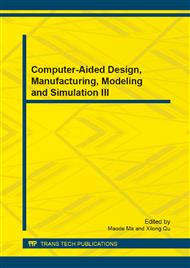p.228
p.235
p.239
p.243
p.247
p.253
p.258
p.263
p.268
A Study on the Optimal Proportions of Flag and Fly Ash in Green Concrete
Abstract:
C30 concrete has been universally used. To improve its quality, the author of this paper made an experiment so as to obtain the optimal proportions of flag, fly ash and silica fume in green concrete. She used granulated blast furnace slag, fly ash and silica fume as concrete admixtures by means of equivalent replacement of cement, mixed them with water reducing agent. She compared the maximum compressive strengths of concretes with different ages and minerals in four schemes and obtained their respective optimal proportions: (1) when slag dosage is 35%, fly ash is 10%, the maximum compressive strength values of concrete with different ages are 27.4 Mpa, 38.6 Mpa, 40.6 Mpa and 45.1 Mpa; (2) when slag dosage is 35% and fly ash additive is 10% and water reducing agent 1%, the maximum compressive strength values with different ages are accordingly 42.3 Mpa, 43.8 Mpa, 46.3 Mpa and 47.0 Mpa; (3) when 30% of fly ash alone is added and 1% of water reducing agent is added, the maximum compressive strength values with different ages are 35.3 Mpa, 39.0 Mpa, 39.8 Mpa and 43.1 Mpa; (4) when fly ash is 30%, slag 20%, silica fume 10% and 1% of water reducing agent is added, the maximum compressive strength values with different ages are 37.2 Mpa, 38.7 Mpa, 40.0 Mpa, and 44.4 Mpa. In addition, the role of performance and mechanism of the above admixtures and uses of green concrete are also expounded..
Info:
Periodical:
Pages:
247-252
Citation:
Online since:
October 2013
Authors:
Price:
Сopyright:
© 2014 Trans Tech Publications Ltd. All Rights Reserved
Share:
Citation:


